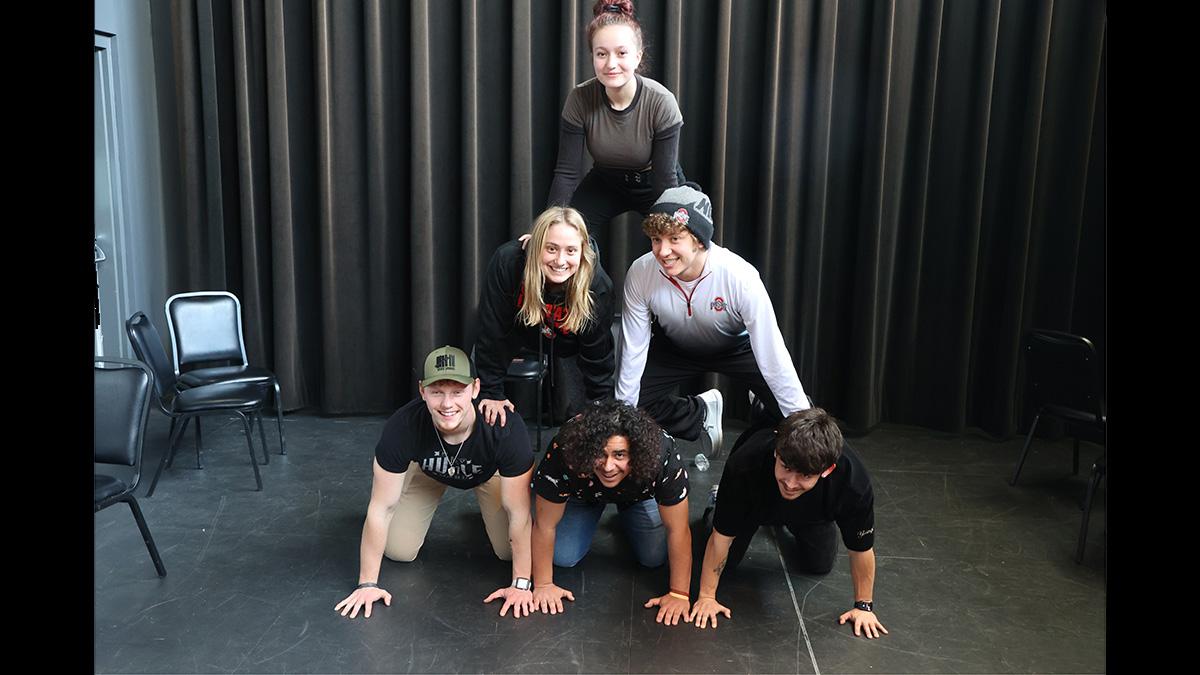The students in the most recent acting 3 class at The Ohio State University at Lima are already putting what they are learning to use in their work settings.
James Buffington is planning a future in business management and is working his way through school waiting tables. The active listening and confidence that improv practice brings is paying off for Buffington in better tips.
“Already from starting this class, I realize that I am more comfortable talking to my customers. I’m more on the spot on what I’m saying,” he said. “When they make a joke, I know what they are talking about and am a little more confident when I go up to a table and talk.”
According to theatre lecturer Margie Anich, the confidence to engage is just one of the transferable skills her students take away from the improv practice.
“Life is improvisation,” Anich said. “Improv helps build communications skills, and, like a lot of theater, it also helps with creative problem solving. You’re looking at all the possibilities, you’re not shutting ideas down before you have a chance to see where they might go.”
Perhaps the most well-known improv technique is the “yes-and” exercise where someone offers the start of scene or conversation. The next takes what is offered and builds on it. It comes in handy whenever you need new ideas, creativity and strong team ties to grow.
Anich hears back from former students who tell her what a difference the skills they developed in Ohio State Lima classrooms have made in their professional lives. One, a non-traditional student with a job in sales, took the class to improve his ability to think on his feet and engage his clients. Anich was delighted when he sent an update several years after graduation to report that he employs the class all the time.
“There are certain moments such as in meetings where he’ll recall the ‘yes-and’ and the whole idea of agreement,” Anich said. “It really helped him to think more imaginatively, more creatively, more as a team.”
